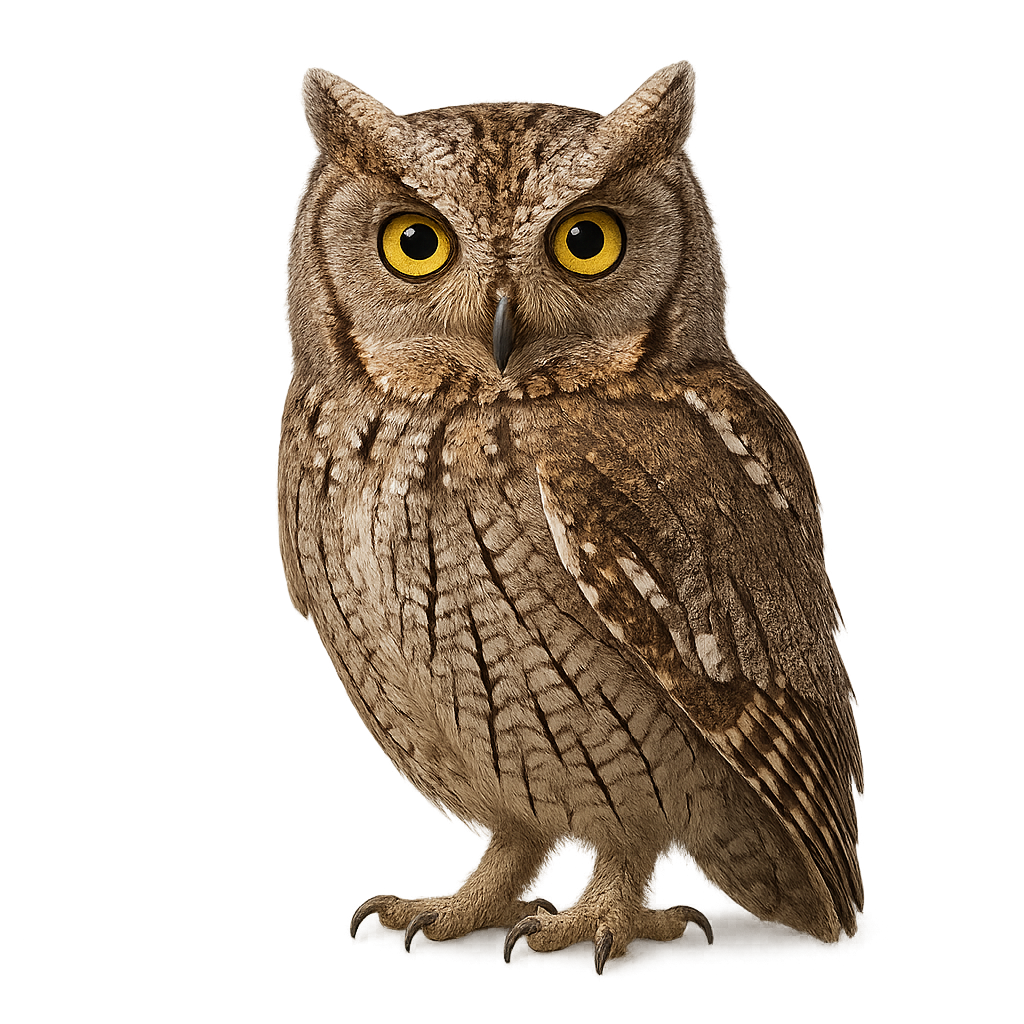Your wildlife photography guide.
Explore the little owl scops in detail, study its behavior, prepare your shots.
Where to observe and photograph the little owl scops in the wild
Learn where and when to spot the little owl scops in the wild, how to identify the species based on distinctive features, and what natural environments it inhabits. The WildlifePhotographer app offers tailored photography tips that reflect the little owl scops’s behavior, helping you capture better wildlife images. Explore the full species profile for key information including description, habitat, active periods, and approach techniques.
Little Owl Scops
Scientific name: Otus scops

IUCN Status: Least Concern
Family: STRIGIDAE
Group: Birds
Sensitivity to human approach: Suspicious
Minimum approach distance: 20 m
Courtship display: April to June
Incubation: 24-25 jours
Hatchings: May to July
Habitat:
Forests and woodlands
Activity period :
Mainly active at night, generally discreet during the day.
Identification and description:
The Scops Owl is a small owl native to Europe, Asia, and North Africa. It measures about 22 cm in length and weighs between 100 and 150 g. Its plumage is primarily gray-brown, with patterns of spots and streaks that help it blend into foliage and tree trunks. It has tufts of feathers on its head, giving it a distinctive appearance. The Scops Owl is a nocturnal bird, primarily feeding on small mammals, insects, and occasionally small birds that it hunts at night. It is often seen perched on tree branches or utility poles. While this species is not in immediate danger, it is sometimes affected by habitat loss and human disturbances.
Recommended lens:
400 mm – adjust based on distance, desired framing (portrait or habitat), and approach conditions.
Photography tips:
Approach slowly and discreetly, as the Scops owl is a nocturnal bird that can be easily disturbed by a sudden approach, especially during the day when it is resting.
Photograph early in the morning or late in the day, when the light is soft and the bird starts to become more active at dusk.
Be attentive to perches: The Scops owl prefers to perch in trees, often near the trunk or in dense bushes. Wait and capture it when the bird is perched quietly.
Respect its tranquility: Do not disturb it in its natural habitat, especially during daytime resting periods, to avoid disrupting its habits.
The Scops owl is a vulnerable species due to habitat loss and hunting. It is important to respect its space and not disturb its resting or breeding sites. Be discreet and follow local conservation rules to preserve this precious nocturnal species.
The WildlifePhotographer App is coming soon!
Be the first to explore the best nature spots, track rutting seasons, log your observations, and observe more wildlife.
Already 1 432 wildlife lovers subscribed worldwide

